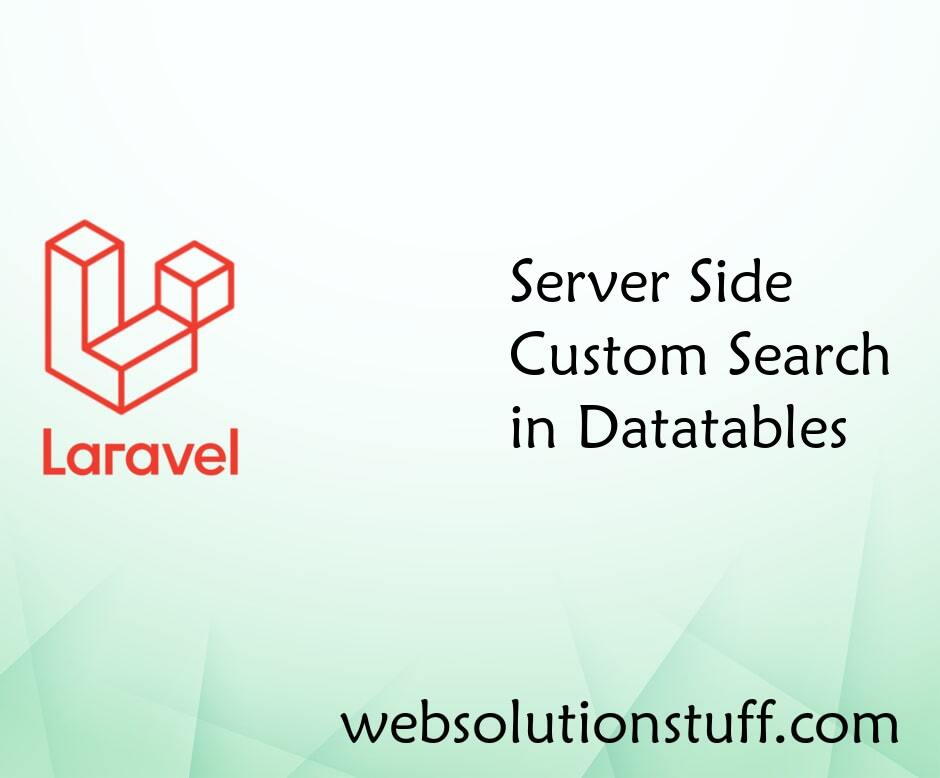Laravel 9 Multiple Database Connections
Websolutionstuff | Mar-04-2022 | Categories : Laravel MySQL
In this tutorial, we will see laravel 9 multiple database connections. we will implement how to use laravel 9 multiple database connections.
Many times we have requirements in our project to use multiple database connections like MySQL, MongoDB, PostgreSQL etc. When you work with a very large amount of projects then you will need to manage multiple database connections. So, in this tutorial, we will see one or more database connections in a single laravel application.
So, let's see multi database connection laravel 9, laravel 9 multiple database connections, multiple database connections in laravel 9 dynamically, how to connect database in laravel 9.
Set both database configurations in a .env file like the below code.
// Database 1
DB_CONNECTION=mysql
DB_HOST=127.0.0.1
DB_PORT=3306
DB_DATABASE=database_1
DB_USERNAME=root
DB_PASSWORD=
// Database 2
DB_CONNECTION_SECOND=mysql
DB_HOST_SECOND=127.0.0.1
DB_PORT_SECOND=3306
DB_DATABASE_SECOND=database_2
DB_USERNAME_SECOND=root
DB_PASSWORD_SECOND=
Now, as we created a variable in the .env file we need to use that variable on the config file. So let's open the database.php file and add a new connections key as below.
config/database.php
<?php
use Illuminate\Support\Str;
return [
'default' => env('DB_CONNECTION', 'mysql'),
'connections' => [
.....
'mysql' => [
'driver' => 'mysql',
'url' => env('DATABASE_URL'),
'host' => env('DB_HOST', '127.0.0.1'),
'port' => env('DB_PORT', '3306'),
'database' => env('DB_DATABASE', 'forge'),
'username' => env('DB_USERNAME', 'root'),
'password' => env('DB_PASSWORD', ''),
'unix_socket' => env('DB_SOCKET', ''),
'charset' => 'utf8mb4',
'collation' => 'utf8mb4_unicode_ci',
'prefix' => '',
'prefix_indexes' => true,
'strict' => true,
'engine' => null,
'options' => extension_loaded('pdo_mysql') ? array_filter([
PDO::MYSQL_ATTR_SSL_CA => env('MYSQL_ATTR_SSL_CA'),
]) : [],
],
'mysql2' => [
'driver' => env('DB_CONNECTION_SECOND'),
'host' => env('DB_HOST_SECOND', '127.0.0.1'),
'port' => env('DB_PORT_SECOND', '3306'),
'database' => env('DB_DATABASE_SECOND', 'forge'),
'username' => env('DB_USERNAME_SECOND', 'root'),
'password' => env('DB_PASSWORD_SECOND', ''),
'unix_socket' => '',
'charset' => 'utf8mb4',
'collation' => 'utf8mb4_unicode_ci',
'prefix' => '',
'prefix_indexes' => true,
'strict' => true,
'engine' => null,
],
.....
Sometimes you may wish to use one database connection for SELECT statements, and another for INSERT, UPDATE, and DELETE statements.
'mysql' => [
'read' => [
'host' => [
'192.168.1.1',
'196.168.1.2',
],
],
'write' => [
'host' => [
'196.168.1.3',
],
],
'sticky' => true,
'driver' => 'mysql',
'database' => 'database',
'username' => 'root',
'password' => '',
'charset' => 'utf8mb4',
'collation' => 'utf8mb4_unicode_ci',
'prefix' => '',
],
Here, I will give you a simple example of how to use multiple connections with migration.
Default Database :
public function up()
{
Schema::create('users', function (Blueprint $table) {
$table->increments('id');
$table->string('name');
$table->string('email');
$table->timestamps();
});
}
Second Database :
public function up()
{
Schema::connection('mysql2')->create('users', function (Blueprint $table) {
$table->increments('id');
$table->string('name');
$table->string('email');
$table->timestamps();
});
}
In this step, we will see the multi-database with a model.
Default :
<?php
namespace App;
use Illuminate\Database\Eloquent\Model;
class Users extends Model
{
....
}
Second :
<?php
namespace App;
use Illuminate\Database\Eloquent\Model;
class Users extends Model
{
protected $connection = 'mysql2';
...
}
Default :
class UsersController extends BaseController
{
public function getRecord()
{
$users = new Users;
$find = $users->find(1);
return $find;
}
}
Second :
class UsersController extends BaseController
{
public function getRecord()
{
$users = new Users;
$users->setConnection('mysql2');
$find = $users->find(1);
return $find;
}
}
Default :
$users = DB::table("users")->get();
print_r($users);
Second :
$users = DB::connection('mysql2')->table("users")->get();
print_r($users);
You might also like :
- Check Also : Online Password Generator
- Check Also : Online JSON Formatter And Viewer
- Read Also : Google Autocomplete Address In Laravel 8
- Read Also : How To Get Current Date And Time In Node.js
Recommended Post
Featured Post

Laravel Unique Validation on U...
Today in this post we will see laravel unique validation on update. unique validation rule in laravel is used when...
Sep-03-2021

How To Get Data Between Two Da...
In this article, we will see how to get data between two dates in laravel 9. Here we will learn how to count d...
Dec-19-2022

Server Side Custom Search in D...
In this example we will discuss about server side custom search in datatable. Datatable provides default searching...
Apr-05-2021

Laravel 8 User Role and Permis...
In this post i will show you laravel 8 user role and permission with example, here we will see how to set user role and...
Jun-02-2021